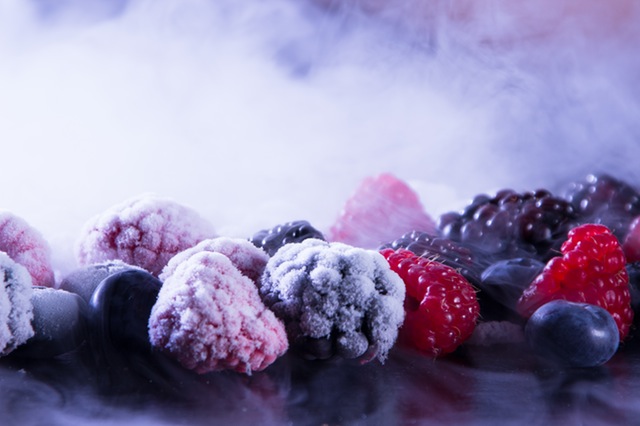Foods in the freezer — are they safe?
What Can You Freeze?
You can freeze almost any food. Some exceptions are canned food or eggs in shells. However, once the food (such as a ham) is out of the can, you may freeze it.
Being able to freeze food and being pleased with the quality after thawing are two different things. Some foods simply don’t freeze well. Examples
are mayonnaise, cream sauce, and lettuce. Raw meat and poultry maintain their quality longer than their cooked counterparts because moisture is lost during cooking.
Is Frozen Food safe?
Food stored constantly at 0 °F or below will always be safe. Only the quality suffers with lengthy freezer storage. Freezing keeps food safe by slowing the movement of molecules, causing microbes to enter a dormant stage. Freezing preserves food for extended periods because it prevents the growth of microorganisms that cause both food spoilage and foodborne illness.
Does Freezing Destroy Bacteria and Parasites?
Freezing to 0 °F or below inactivates any microbes -- bacteria, yeasts, and molds -- present in food. Once thawed, however, these microbes can again become active, multiplying under the right conditions to levels that can lead to foodborne illness. Since they will then grow at about the same rate as microorganisms on fresh food, you must handle thawed items as you would any perishable food.
Trichina and other parasites can be destroyed by sub-zero freezing temperatures. However, very strict government-supervised conditions must be met. Home freezing cannot be relied upon to destroy trichina. Thorough cooking, however, will destroy all parasites.
Freshness and Quality
Freshness and quality at the time of freezing affect the condition of frozen foods. If frozen at peak quality, thawed foods emerge tasting better than foods frozen near the end of their useful life. So freeze items you won’t use quickly sooner rather than later. Store all foods at 0 °F or below to retain vitamin content, color, flavor, and texture.
Nutrient Retention
The freezing process itself does not destroy nutrients. In meat and poultry products, there is little change in nutrient value during freezer storage.
Enzymes
Enzyme activity can lead to the deterioration of food quality. Enzymes present in animals, vegetables, and fruit promote chemical reactions before and after harvest, such as ripening. Freezing only slows the enzyme activity that takes place in foods. It does not halt them.
Enzyme activity does not harm frozen meats or fish and is neutralized by the acids in frozen fruits. But most vegetables that freeze well are low in acid and require brief, partial cooking to prevent deterioration. This is called “blanching.” For successful freezing, blanch or partially cook vegetables in boiling water or in a microwave oven. Then rapidly chill the vegetables prior to freezing and storage. Consult a cookbook for timing.
Freezer Burn
Freezer burn does not make food unsafe; but merely dry in spots. It appears as grayish-brown, leathery spots and is caused by air coming in contact with the surface of the food. Cut freezer-burned portions away either before or after cooking the food. Heavily freezer-burned foods may have to be discarded for quality reasons.
Color Changes
Color changes can occur in frozen foods. The bright red color of meat as purchased usually turns dark or pale brown depending on its variety. This may be due to lack of oxygen, freezer burn, or abnormally long storage.
Freezing doesn’t usually cause color changes in poultry. However, the bones and the meat near them can become dark. Bone darkening results when pigment seeps through the porous bones of young poultry into the surrounding tissues when the poultry meat is frozen and thawed.
The dulling of color in frozen vegetables and cooked foods is usually the result of excessive drying due to improper packaging or overlengthy storage.
Refreezing
Food thawed in the refrigerator is safe to refreeze without cooking, although there may be a loss of quality due to the moisture lost through thawing. After cooking, foods that were previously frozen are safe to refreeze. If previously cooked foods are thawed in the refrigerator, you may refreeze the unused portion. Freeze leftovers within 3-4 days. Do not refreeze any foods left outside the refrigerator longer than 2 hours; 1 hour in temperatures above 90 °F (32 °C).


